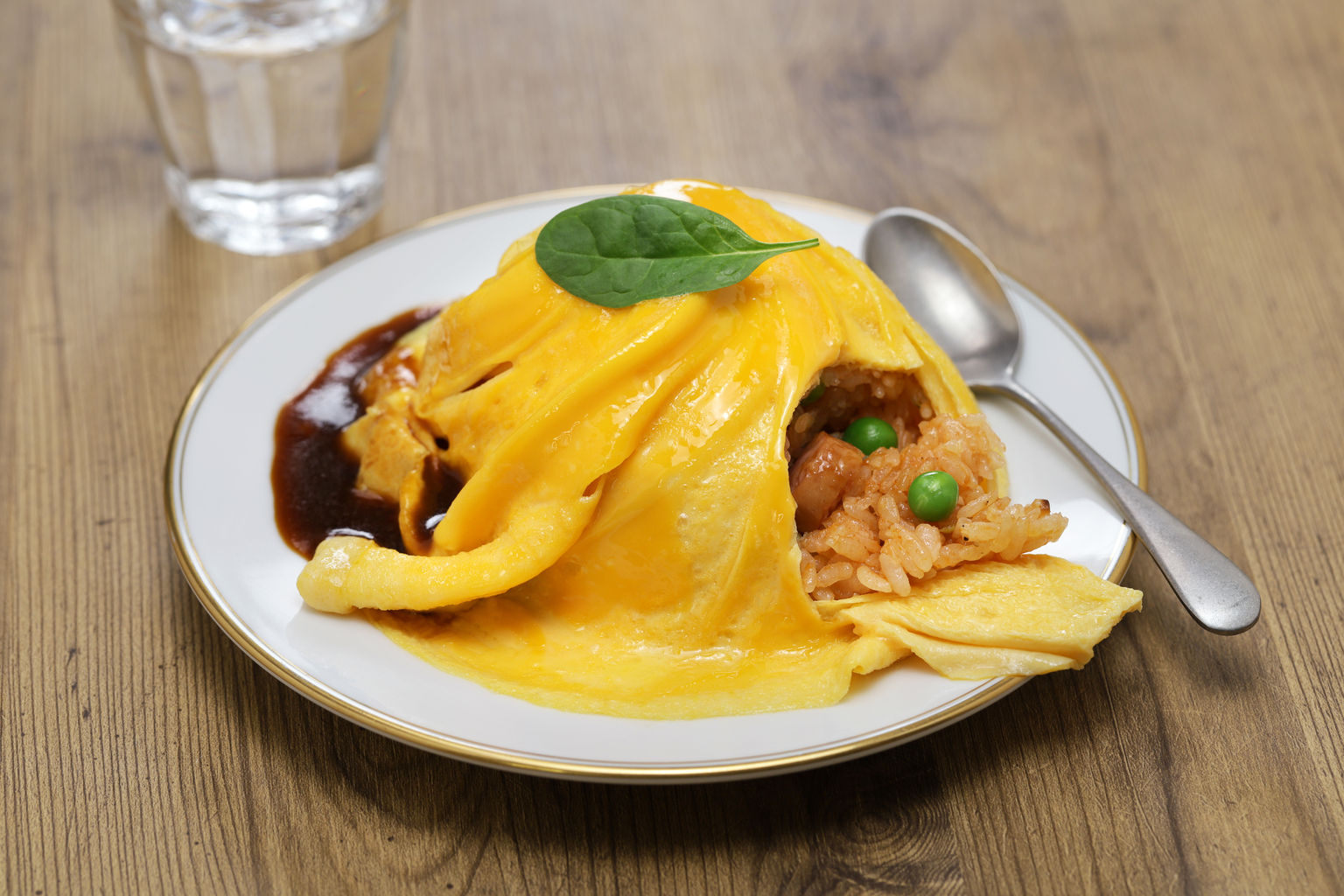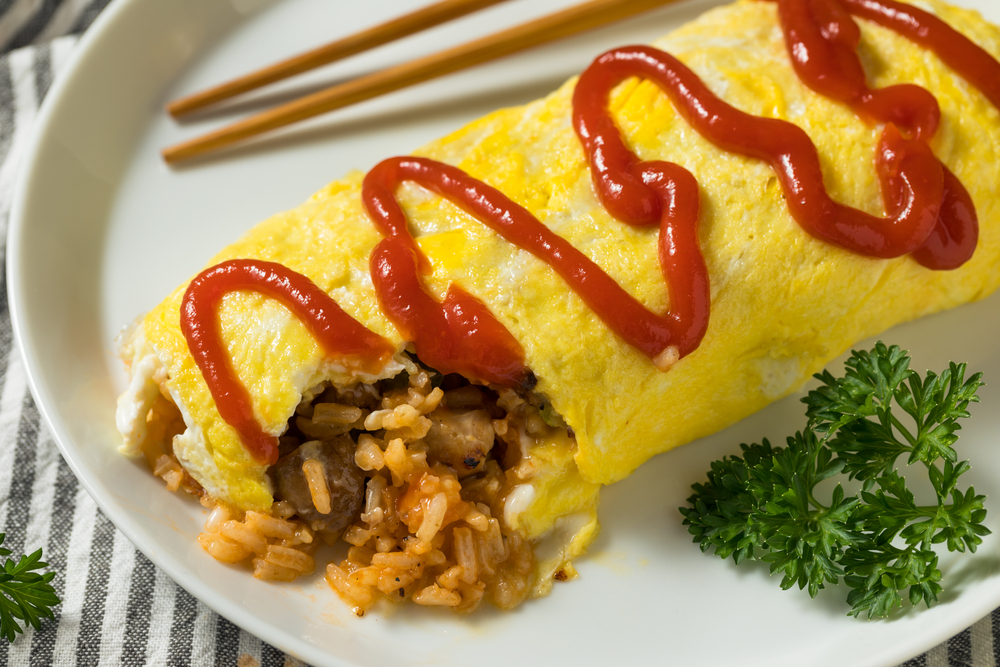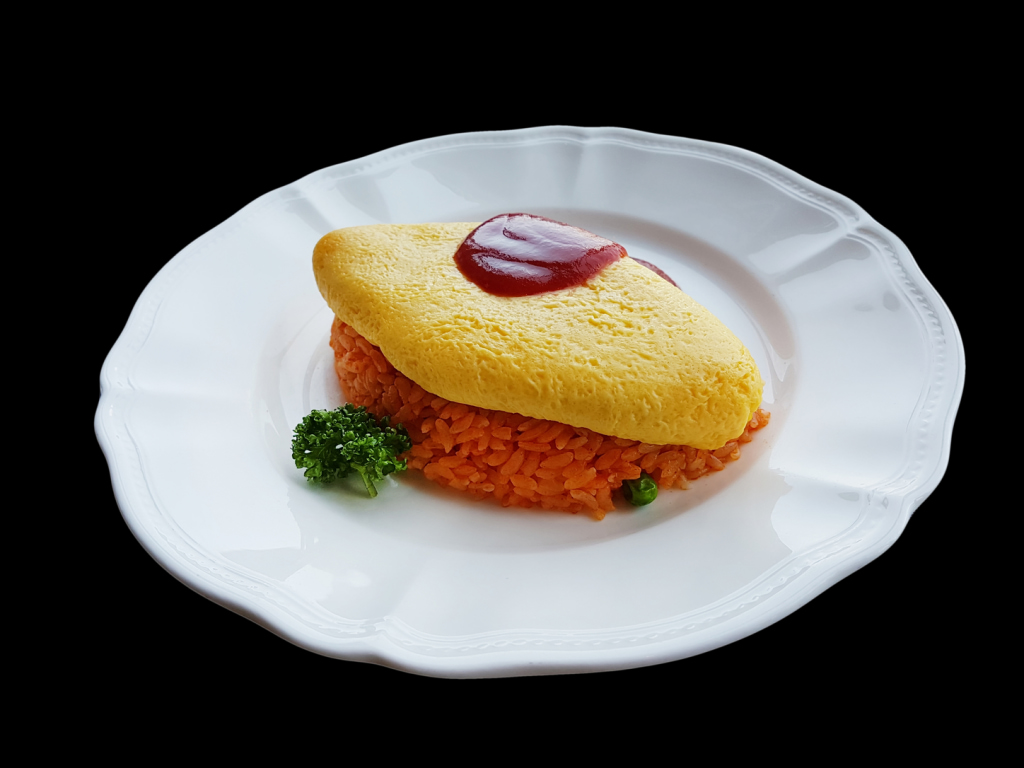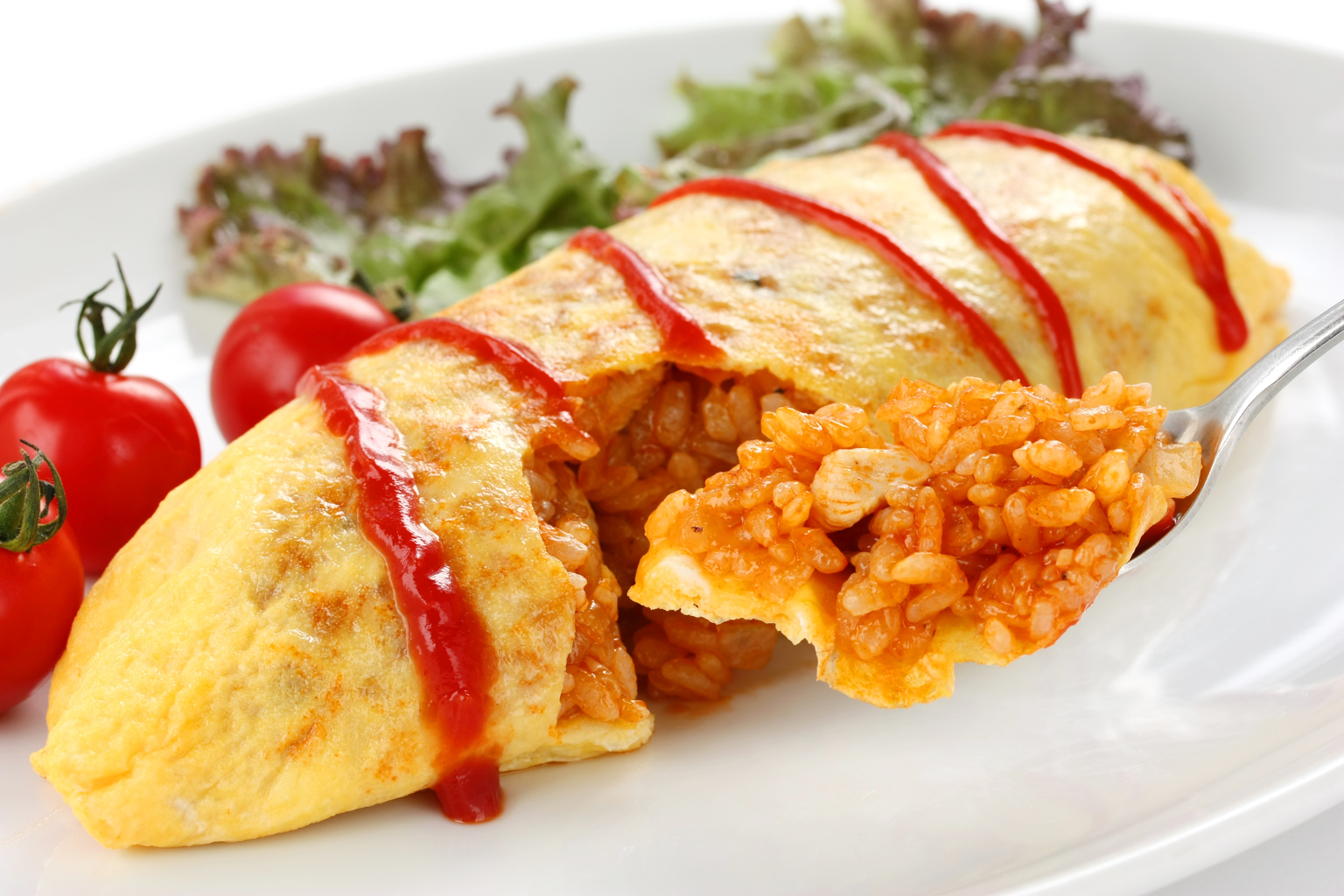Omurice is one of the most delicious and popular dishes of yoshoku, or Western-influenced Japanese cuisine. Ketchup fried rice is mixed with chicken and vegetables, then encased in a delicately cooked omelet, resulting in a beloved comfort food dish by all. Omurice is easy to make at home and available in most classic diners and kissaten in Japan. But how did omurice come to be? And why has it become so popular in Japan?
Omelette + Rice = Omurice
The word omurice itself reflects the foreign roots of this Japanese dish. It’s a portmanteau from the French word “omelette” and the English word “rice,” all written in katakana.
Before the Edo Era (1603–1867), eating eggs was not generally common due to strict Buddhist standards of not eating animal-derived products. Once Japan opened its borders and ports to the world in the late 19th century and early 20th century, Western culture started to influence Japanese cooking and tastes. Omurice is one of many yoshoku dishes born out of this mixing of cultures.
The Origins of Omurice
The details are still debated but the omurice origins can be traced back to Tokyo and Osaka. The Tokyo origin story is that omurice made its debut in 1900 at a famous Western-style restaurant in Ginza called Renga-Tei. To cope with working in a busy kitchen, the chef created a dish that could easily be eaten with a spoon. Rice was fried with various vegetables and chicken, mixed with eggs and finally served with ketchup on top.
However, Hokkyokusei in Osaka claims to be the first restaurant to pioneer omurice in 1922. Here they incorporated the ketchup into the rice, giving it that red color and adding sweetness and umami. Finally, they enveloped it in a gently cooked omelet and served to a customer who was feeling unwell so he would regain his stamina.
While we don’t know which one of these was truly the first, one this is for sure: Omurice made its debut in Japan in the early 20th century, making it a dish that has been around for at least 100 years.
What Some of the Omurice Variations?
Omurice is the general term for sautéed rice combined with an omelet, but there are many variations to the dish. The most common type of omurice is where a thin layer of omelet wraps around the rice, almost like a crepe. Since the egg is fully cooked through, it can be stored throughout the day, making it perfect for bento boxes.
In contrast, the most popular type of omurice eaten at restaurants contains partially cooked fluffy eggs. The eggs are quickly scrambled in the pan, folded and sealed like a typical omelet. Once placed on top of the rice, the omelet is sliced open with the delicious, oozing egg cascading over the rice. Sounds easy, but this type of omelet takes real technique and practice to form in the correct shape, the correct consistency and the bright yellow color with no browning. Chef Motokichi Yukimura of Kichi Kichi Omurice in Kyoto (video above) has become a viral sensation after theatrically and masterfully creating this style of omurice with ease.
Recently, the tornado omurice has taken social media by storm. By pinching the center of the eggs with a pair of chopsticks and slowly rotating the pan as it cooks through, the egg takes on a swirl-like pattern mimicking a tornado. This thin omelet is not completely cooked through, retaining some of the creaminess and silkiness that pairs perfectly with the rice.

Not just the omelet but the rice inside has many variations. Instead of ketchup, Hayashi omurice is also very popular. Hayashi stew is made with beef, onions and mushrooms stewed in demi-glace sauce consisting of red wine and tomatoes. The rich, indulgent and umami-packed rice pairs well with the creamy eggs. After slicing open the partly set omelet, more demi-glace sauce is generously poured on top. It mixes with the egg curdles, creating a delectable combination of flavors and textures.
Depending on the restaurant, there are more creative takes on omurice. Cheese omurice, creamy seafood omurice, curry omurice – just to name. Local culture further influences the dish, so there is taco rice omurice in Okinawa for example. In some restaurants, the rice is not even rice but yakisoba noodles.

Where Can You Eat Omurice?
Omurice can be found in nearly any Western-style restaurant. More commonly, parents prepare cutely decorated omurice for their children’s bento boxes, which has since become an online trend. A popular design is Rilakkuma, a children’s fictional bear character. The ketchup rice is sculpted into the shape of Rilakkuma and covered in a thin omelet blanket.
Throughout the country, professional chefs as well as house cooks have taken the humble omurice and turned it into a cultural sensation. Specialized shops sell many varieties and flavor combinations, from the classic one to seafood omurice concoctions. Home cooks big up the kawaii, sculpting and designing the rice, eggs and toppings. It’s a dish with open creative potential.










